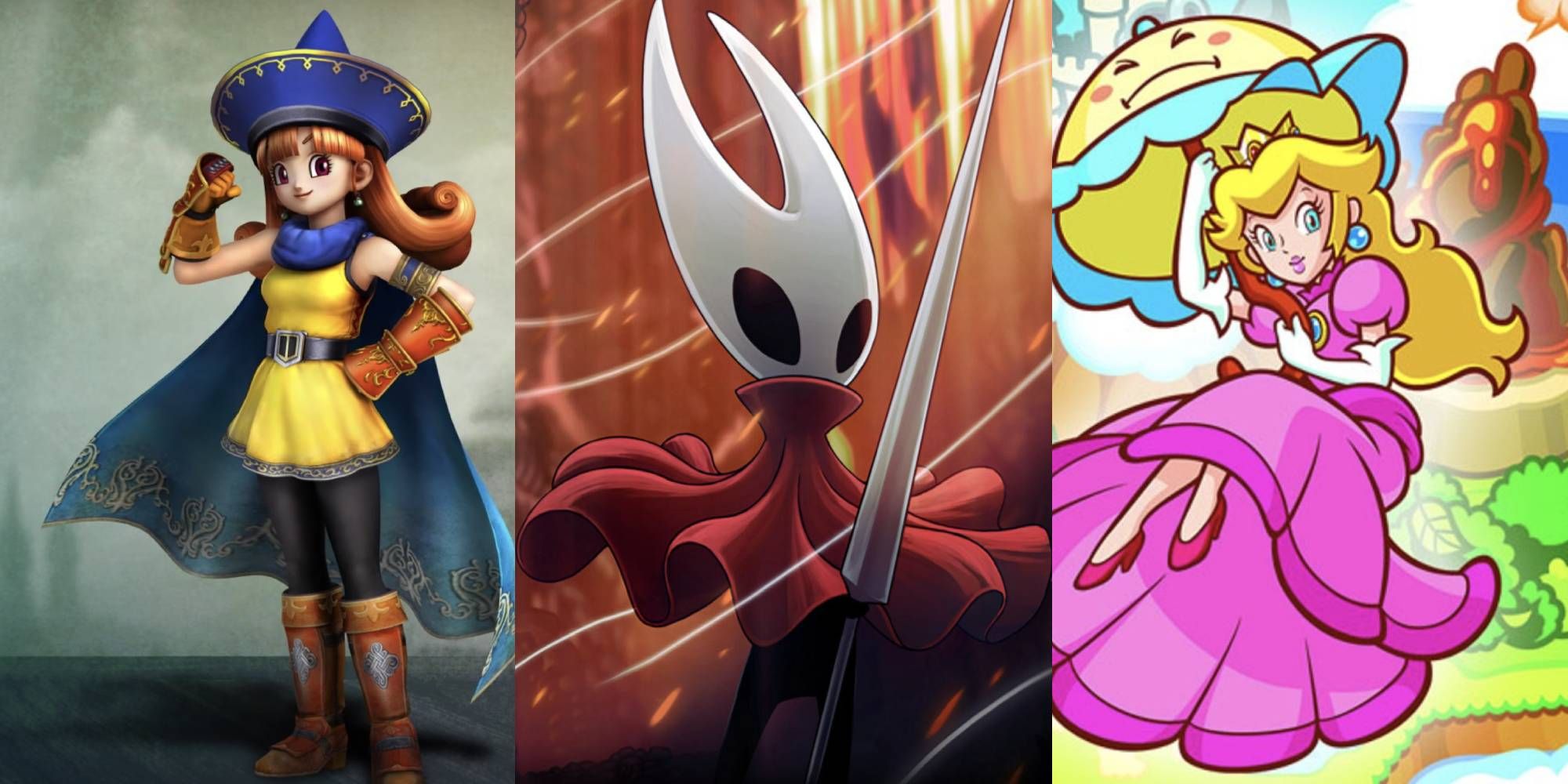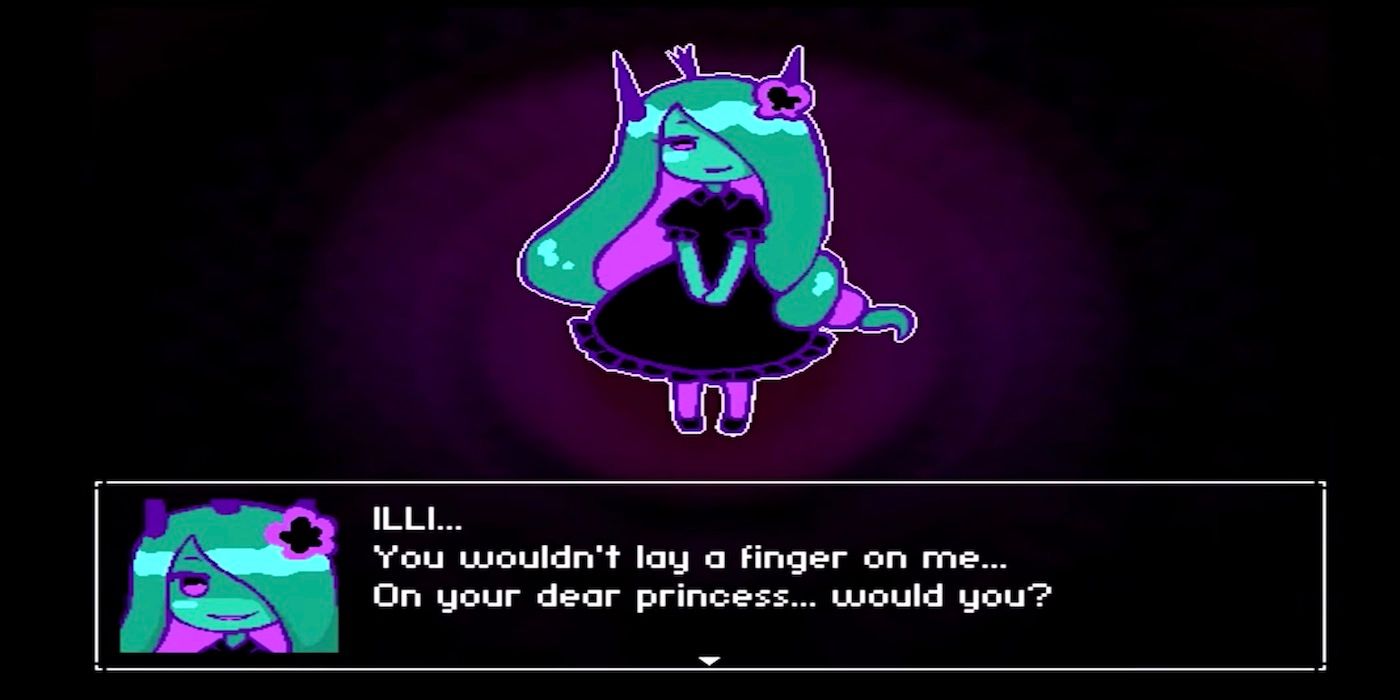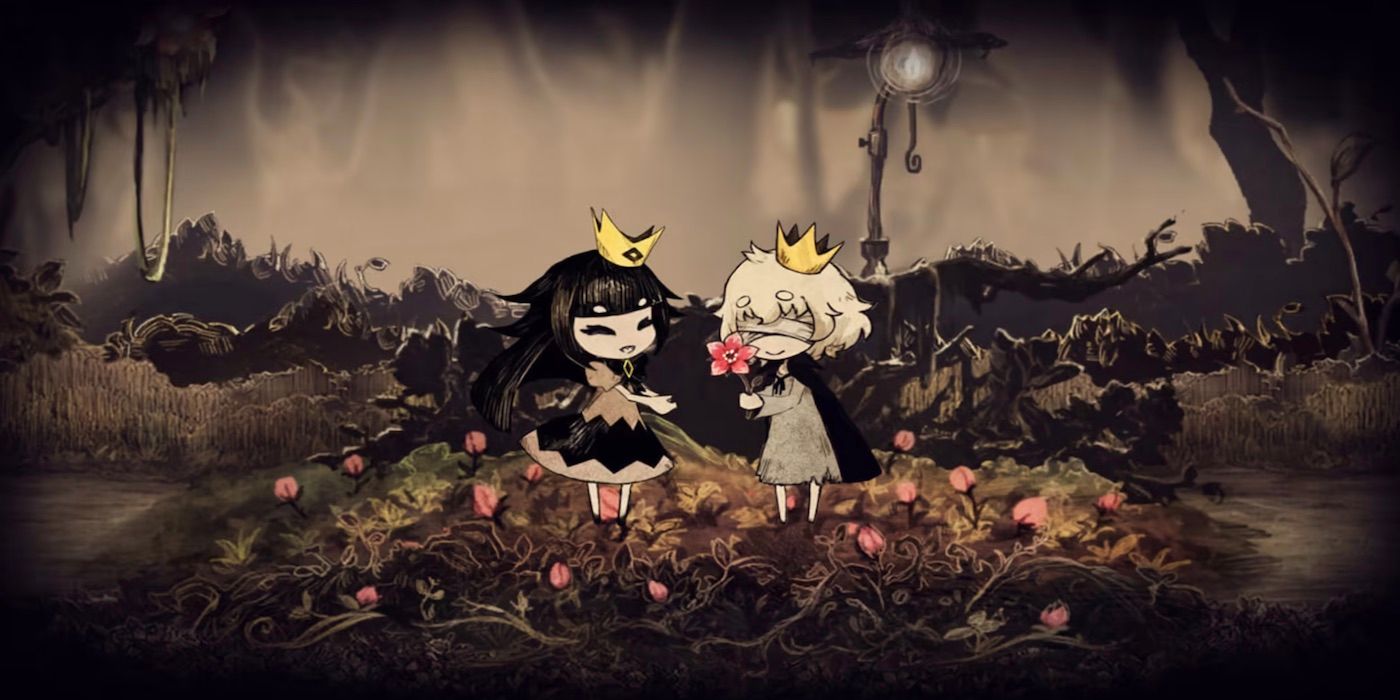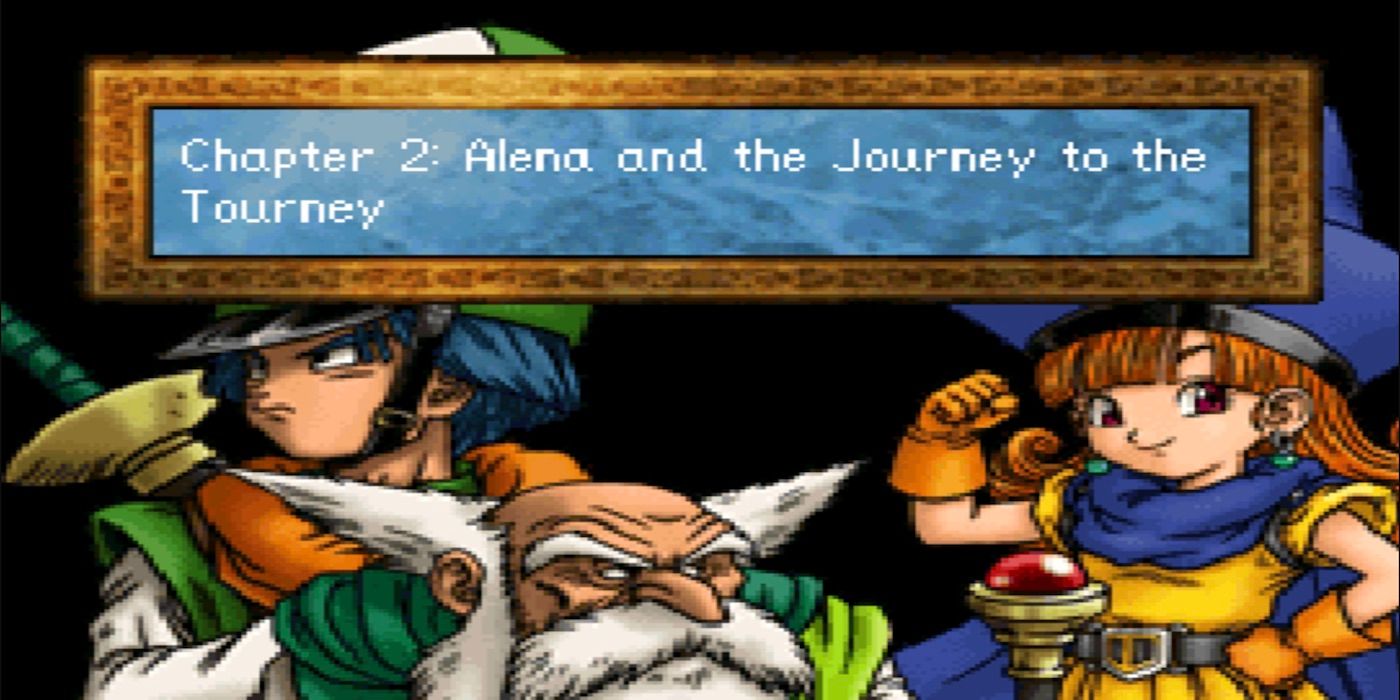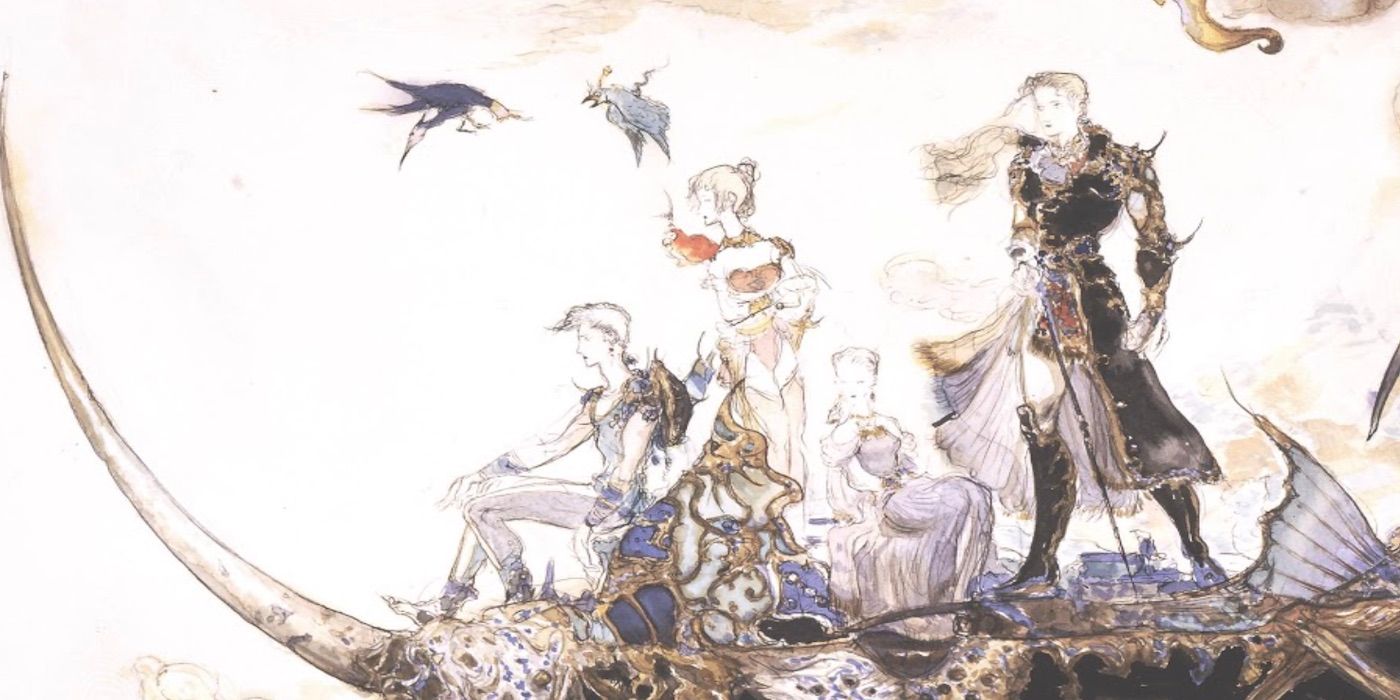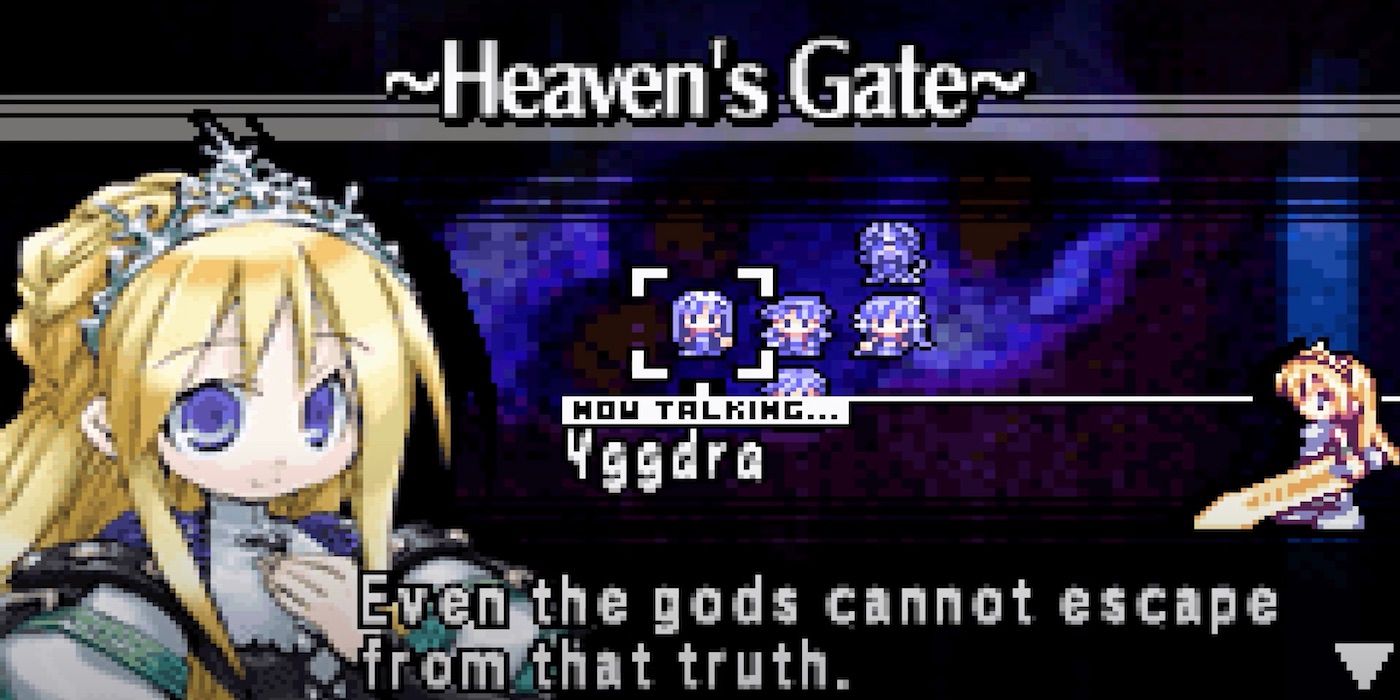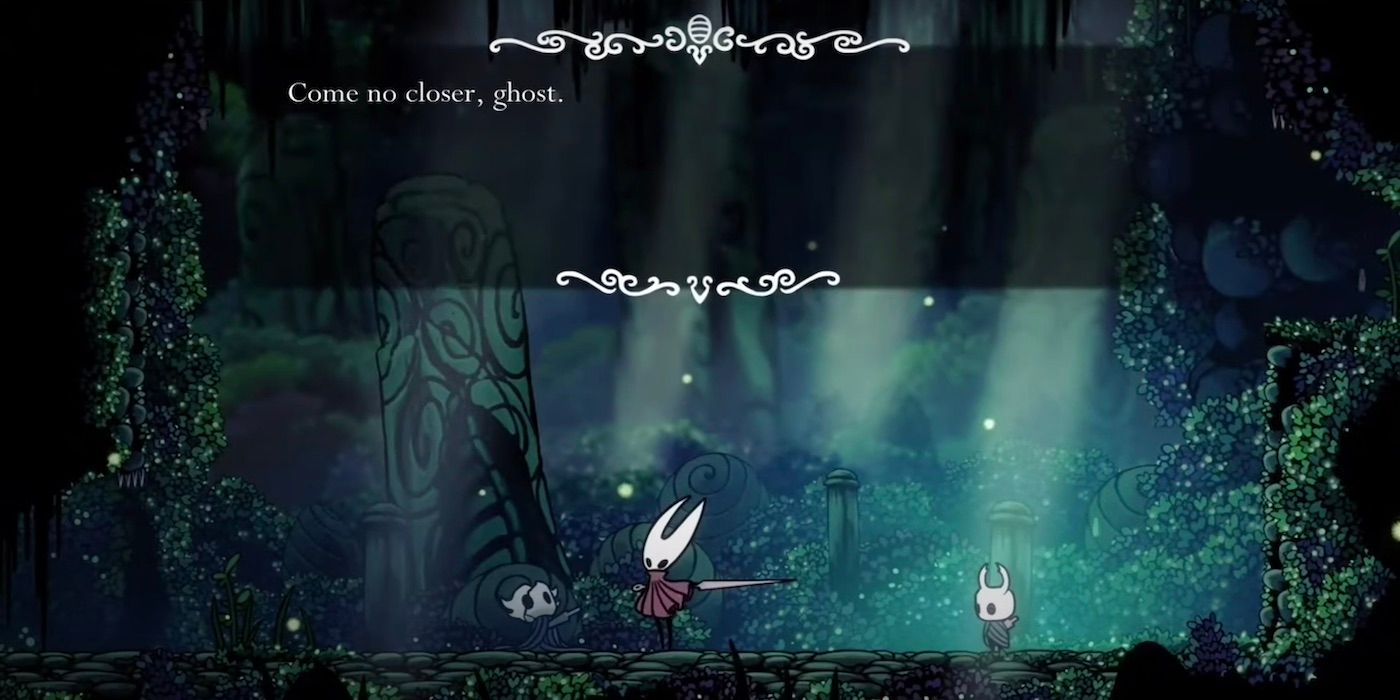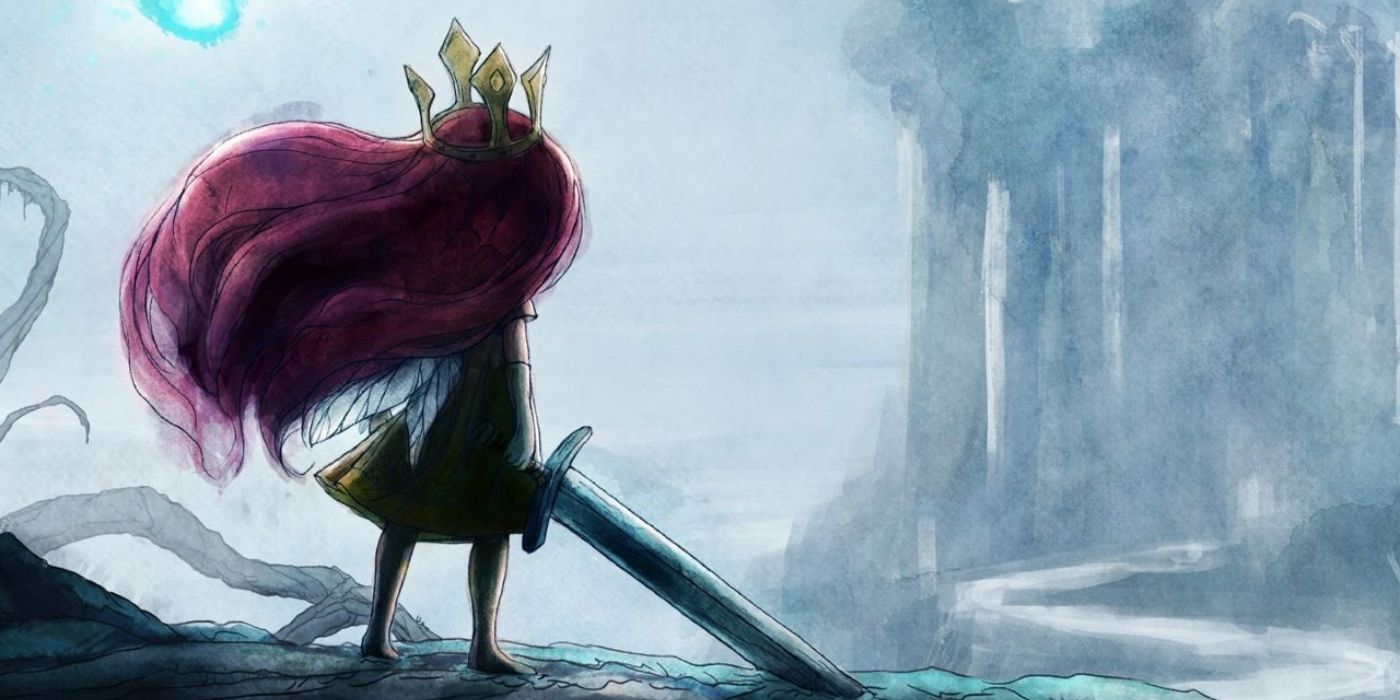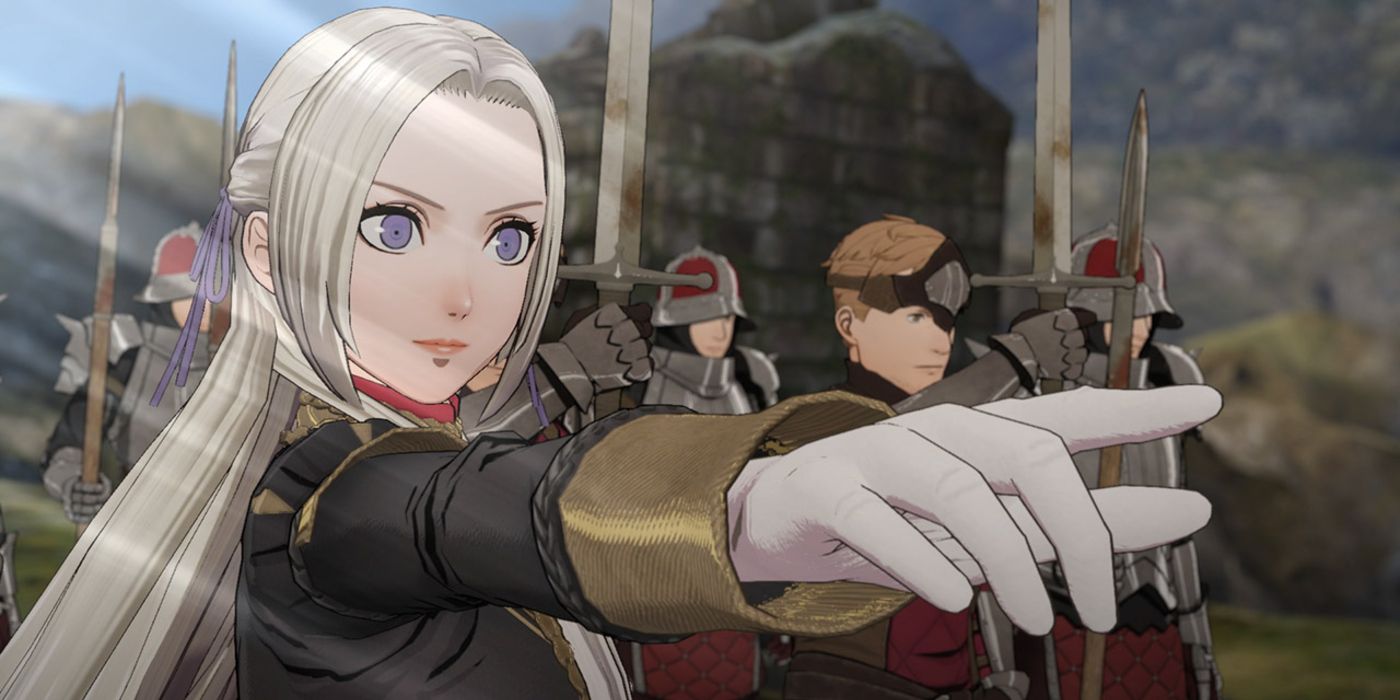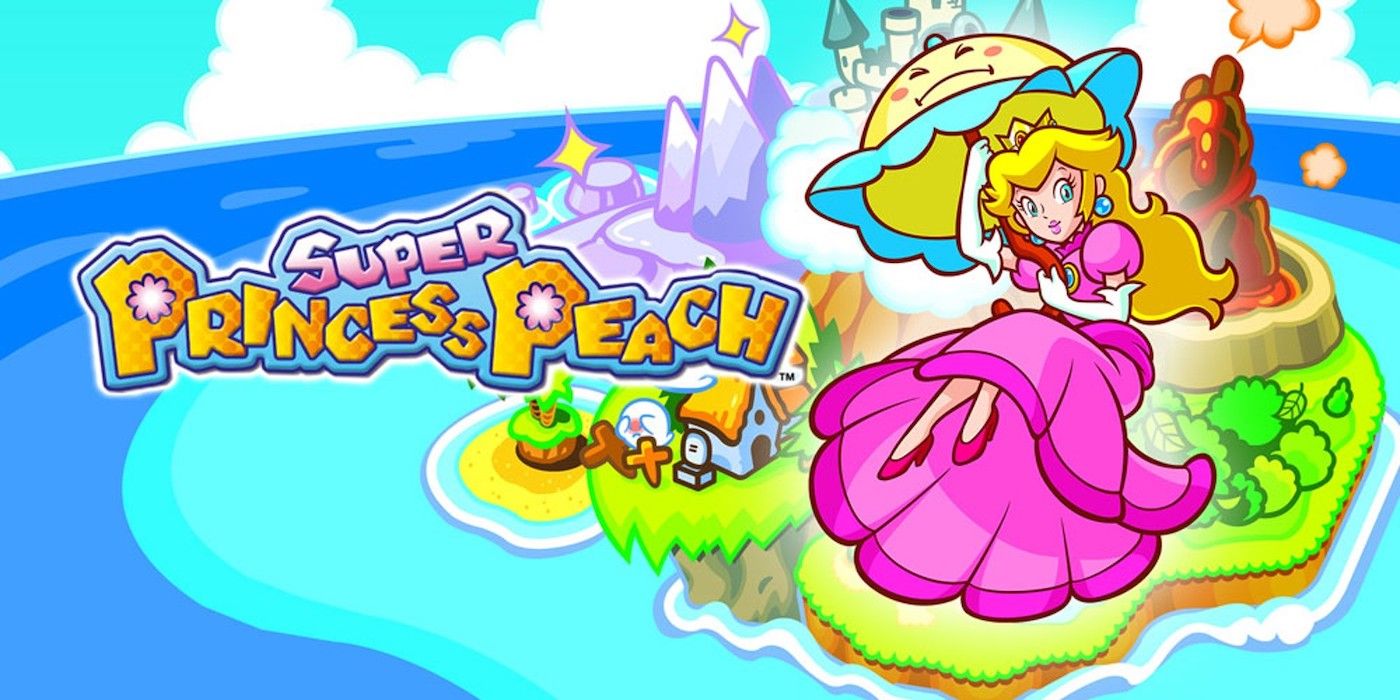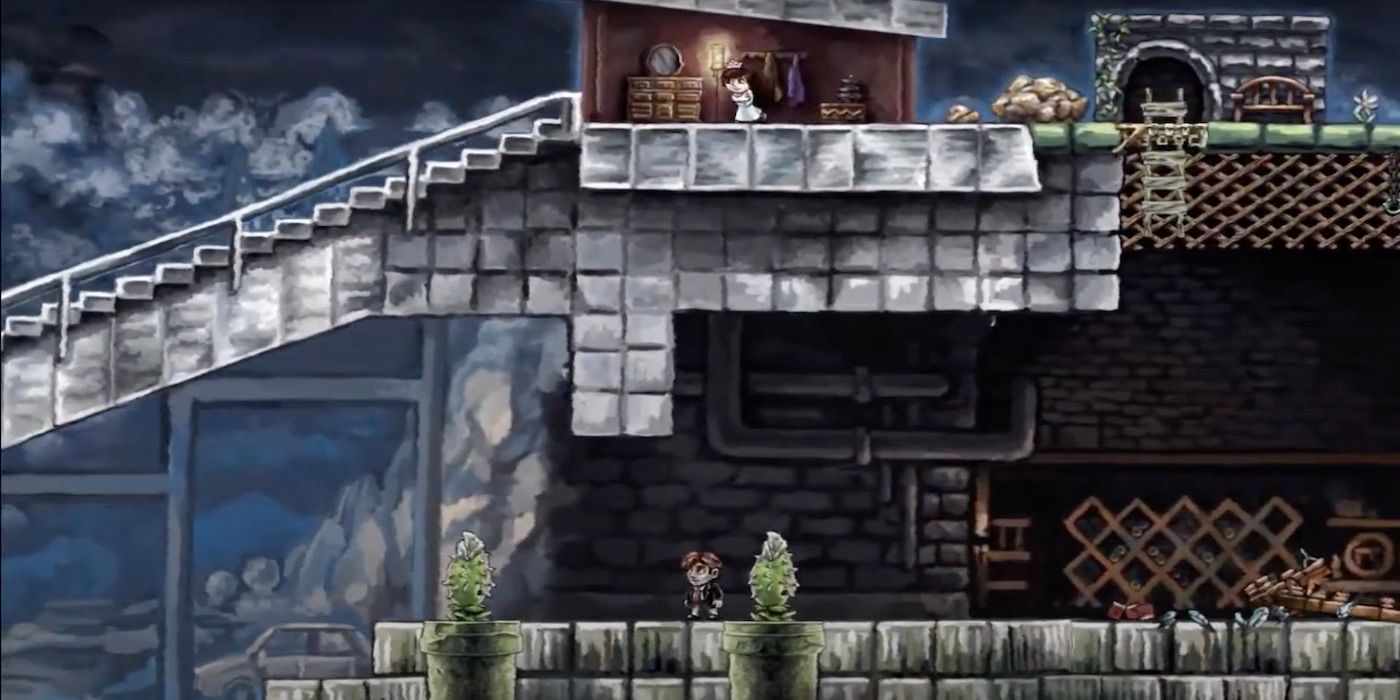Scheduled to release in 2023, Slay the Princess is a horror visual novel that's similar to The Stanley Parable. From the start, the narrator instructs the protagonist to kill the princess to supposedly save the world, and the player can choose whether to follow the narrator's instructions or create their own path.
During the early video game eras, one of the most common tropes was the "Save the Princess" trope, which had players save a kidnaped princess from the main antagonist. Though most modern games have simply left this trope behind, some games, like Hollow Knight, deliberately subvert it.
KAIMA (2016)
Released in 2016, KAIMA is a short free indie RPG Maker game available on Itch.io. Because the titular planet is slowly being destroyed by Prince Vido, a pink demon named Searina has lost her soul while trying to escape the approaching void. As a soulless body, she teams up with another surviving resident named Illi to rescue Princess Ezel and save the world.
Once they defeat Vido and release the sealed Ezel, however, they discover that Vido was doing all of this to stop Ezel, who was actually planning on consuming the whole planet to increase her powers. With her freed, Searina and Illi must now kill her instead of rescuing her.
The Liar Princess and the Blind Prince (2018)
Despite being inspired by classic fairy tales, The Liar Princess and the Blind Prince is a 2018 side-scrolling puzzle adventure game that flips the standard tropes. Developed by Nippon Ichi Software, who has made other storybook-esque titles like htoL#NiQ and The Cruel King and the Great Hero, this game centers around a wolf girl with a beautiful singing voice.
When a young prince falls in love with the voice and tries to see her, she accidentally blinds him while trying to cover his eyes. In exchange for her singing voice, the wolf gains the ability to transform into a human princess so that she can guide the prince to a witch that can heal his eyes.
Dragon Quest IV: Chapters of the Chosen (1990)
Released in 1990 for the NES, Dragon Quest IV: Chapters of the Chosen is a JRPG that follows either a male or female hero as they gather a party to stop Psaro the Manslayer from destroying the world. While this hero is the main protagonist, the player doesn't actually meet them until Chapter Five. Before that, each chapter focuses on one of the characters that will be in the hero's party.
In Chapter Two, the player is introduced to the Tsarevna Alena who sneaks out of the castle so that she can travel the world and become the strongest fighter. With the help of her two retainers Kiryl and Borya, she defeats a demon, obtains an item to cure her ailing father, wins a tournament, and joins the hero on their quest.
Final Fantasy V (1992)
Originally only released in Japan in 1992 for the Super Famicom but later ported and released internationally, Final Fantasy V is a JRPG that contains two powerful princesses that help save the world. Directed by the creator of the franchise, Hironobu Sakaguchi, the game follows the Warriors of Light as they try to stop an evil sorcerer from destroying the elemental crystals.
One of the Warriors of Light is Princess Lenna Charlotte Tycoon, who is kind, impulsive, adventurous, and strong-willed. Meanwhile, Lenna's elder sister Faris Scherwiz became a bold pirate captain after she was lost at sea. Both princesses can take care of themselves and directly help save the world.
Yggdra Union: We'll Never Fight Alone (2006)
One of the most underrated GBA RPGs is the 2006 tactical JRPG Yggdra Union: We'll Never Fight Alone, which is the second episode in Sting Entertainment's ongoing Dept. Heaven series. This brutally difficult game follows the titular 17-year-old princess, Yggdra Yuril Artwaltz, who is forced to leave the Kingdom of Fantasinia after it's taken over by the Bronquian Empire.
Before she leaves, however, she manages to grab the Holy Sword Gran Centurio, which is a family heirloom, and uses it to help gather allies and retake her kingdom. Although she begins the game as a victim, she eventually becomes so powerful that she conquers the entire world, though the game forces players to wonder if they're doing the right thing.
Hollow Knight (2017)
While there have been plenty of excellent Metroidvanias in recent years, one of the most well-known and critically acclaimed examples is the 2017 action-adventure game Hollow Knight. As an insectoid warrior simply known as the Knight, the player must explore the ruins of the kingdom of Hollownest in order to find the source of a supernatural infection and defeat it. During this journey, the Knight will meet many unique characters.
One of these characters is Hornet, who is the princess-protector of Hollownest and the Knight's sister. She's a powerful warrior who can defeat most enemies using her needle and thread, and the player has to fight her several times before they team up. In the sequel, Hollow Knight: Silksong, she'll be the main protagonist.
Child of Light (2014)
Along with The Liar Princess and the Blind Prince, the 2014 RPG platformer Child of Light is another beautiful storybook-esque game that subverts this trope. This game follows a young Austrian princess named Aurora who wakes up in an alternate world known as Lemuria after she supposedly dies from an illness. To return home, she must defeat the Queen of the Night, Umbra, so that the sun, moon, and stars can return to the land.
With the help of a sword, Aurora travels across this magical world and slowly learns how to stand on her own. Eventually, she makes some new friends and learns the truth about her heritage.
Fire Emblem Series (1990-present)
One of the few franchises that has been subverting this trope since the beginning is the ongoing tactical JRPG series Fire Emblem, which helped establish the tactical RPG genre. Even in the first entry in 1990, Fire Emblem: Shadow Dragon and the Blade of Light, one of the main characters is Princess Caeda, who is a confident and strong-willed warrior that joins the protagonist, Marth, on his quest.
Since then, other characters such as Elincia from Fire Emblem: Path of Radiance, Lyn from Fire Emblem: The Blazing Blade, Eirika from Fire Emblem: The Sacred Stones, and more have continued this tradition. The latest mainline entry, Fire Emblem: Three Houses, had Edelgard, who is the princess of the Adrestian Empire, as one of the main characters who is also a ruthless fighter.
Super Princess Peach (2005)
While the mainline Mario titles continue to put Princess Peach in the "damsel in distress" role, the 2005 DS platformer Super Princess Peach is one of the few instances where she's the one saving Mario and Luigi instead. In this best-selling title, the player controls Peach as she travels to Vibe Island to save the plumber brothers and the several Mushroom Kingdom residents from Bowser, who has obtained a legendary magic weapon known as the Vibe Scepter.
With the help of a sentient parasol named Perry, Peach navigates through the levels of each world and uses special abilities that she gains along the way. Because of the Vibe Scepter, everyone's emotions are all over the place, but Peach is able to use the emotions to solve puzzles and defeat enemies.
Braid (2008)
Released in 2008, Braid is a time-based puzzle platformer and is often considered one of the main pioneering titles to prove that indie games could be successful. Created specifically to criticize the "Saving the Princess" trope and other video game norms, the game follows a young man named Tim who is supposedly trying to rescue a princess from an evil monster.
But, during the final level, it's revealed that the princess never needed to be rescued at all. He was the monster who was trying to catch her, but she had already left with the real knight.

